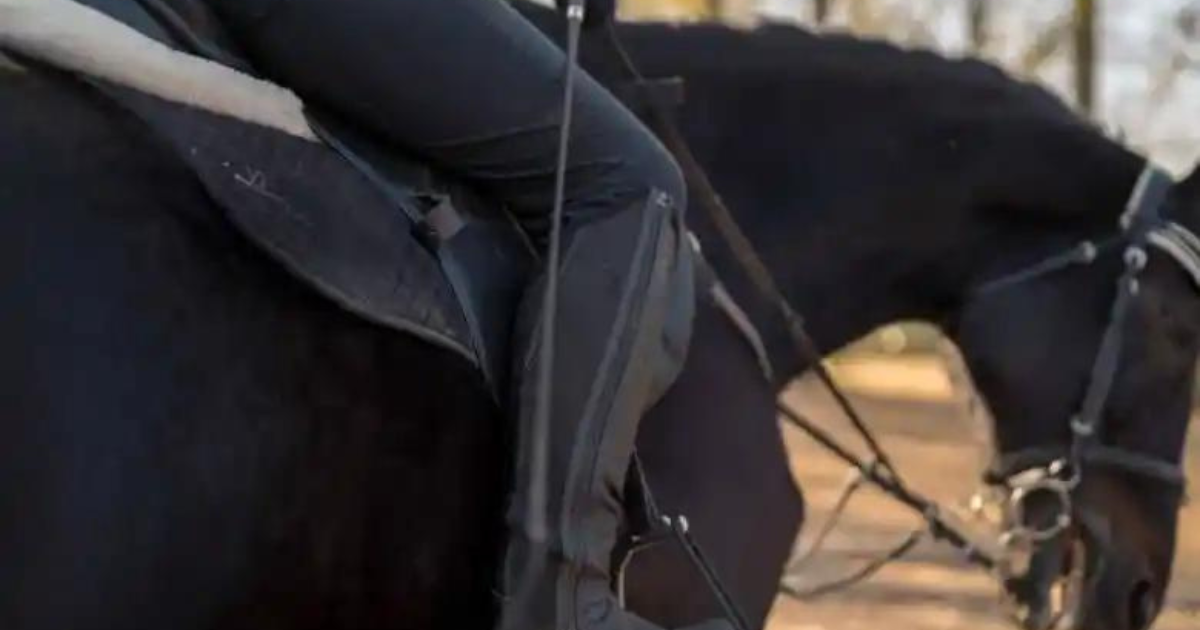When it comes to horseback riding, equipment plays a crucial role in ensuring both rider and horse have a safe and enjoyable experience. One essential piece of equipment you might encounter is a riding crop. But what exactly is a riding crop, and how is it used? In this blog, we’ll dive into everything you need to know about riding crops, from their purpose to how to use them correctly.
What Is A Riding Crop?
A riding crop is a type of equestrian tool used primarily to communicate with a horse. It’s a slender, flexible rod with a small, padded end, often referred to as the “popper.” The crop is held by the rider and used to give gentle taps or signals to the horse. Unlike a whip, which might be used for more significant correction, a riding crop is typically used for light reinforcement and encouragement.
The Anatomy Of A Riding Crop
A riding crop generally consists of three main parts:
- The Shaft: This is the long, straight part of the crop. It can be made from materials like fiberglass, plastic, or bamboo. The shaft is usually wrapped in leather or fabric for a comfortable grip.
- The Popper: The popper is the small, flat end at the tip of the crop. It’s often made of leather or synthetic materials and is designed to make a distinctive sound when it hits the horse’s side. This sound is used to get the horse’s attention or reinforce commands.
- The Handle: Located at the end of the crop, the handle is where the rider grips the crop. It’s designed for comfort and control, often wrapped in a material that prevents slipping.
Purpose And Use
The primary purpose of a riding crop is to communicate with the horse. It’s a tool for giving gentle reminders or encouragement, not for punishment. Here’s how a riding crop is typically used:
- Encouragement: When a horse is slow to respond to a rider’s leg aids, a light tap from the riding crop can provide the extra encouragement needed to prompt action. It helps the horse understand that it needs to move forward or increase its pace.
- Reinforcement: If a horse is not responding to the rider’s cues, a riding crop can be used to reinforce those signals. The crop helps the rider be clear and consistent with their commands, which helps the horse learn and remember what is expected.
- Precision: In some cases, a riding crop can be used to give precise signals to the horse, helping with things like turning or changing pace. The light tap of the crop can provide a subtle but clear communication that might be missed through leg aids alone.
How To Use A Riding Crop Properly
Using a riding crop effectively involves understanding its purpose and using it with care. Here are some tips for proper use:
- Gentle Taps: A riding crop should be used for gentle taps, not for hitting. The goal is to provide a light touch that reinforces commands without causing discomfort. The crop is not meant to be a tool for punishment.
- Timing and Technique: Timing is crucial when using a riding crop. The crop should be used in sync with the rider’s leg aids and other commands. For example, if you want your horse to trot, use your leg to signal the horse, and if necessary, follow up with a light tap from the crop to reinforce the cue.
- Consistency: Consistency is key to effective communication. The riding crop should be used in a consistent manner so that the horse learns to associate the crop’s signal with the desired action. This helps the horse understand what is expected and builds a better relationship between rider and horse.
- Respect and Care: Always use the riding crop with respect for the horse. It’s important to be aware of the horse’s response and ensure that the crop is used in a way that is comfortable for the animal. If used properly, the crop can be a helpful tool for training and communication.
Common Misconceptions
There are a few misconceptions about riding crops that are worth addressing:
- Riding Crops Are Not Punishment Tools: Some people mistakenly believe that riding crops are used to punish horses. In reality, riding crops are meant for gentle reinforcement and encouragement, not for punishment.
- Not for Aggressive Riding: A riding crop should never be used aggressively or forcefully. It’s a tool for communication, not for coercion. Using a crop harshly can damage the trust between rider and horse.
- It’s Not a Replacement for Training: A riding crop is not a substitute for proper training. It should be used in conjunction with other training methods and aids to help the horse learn and respond effectively.
Alternatives To Riding Crops
While riding crops are a common tool, there are alternatives that might be used depending on the situation:
- Whips: Different from a riding crop, whips are often used for more significant cues and corrections. They are longer and can be used for more direct reinforcement.
- Spurs: Spurs are worn on the rider’s boots and provide additional cues through the rider’s legs. They can be used alongside a riding crop for more precise communication.
- Voice Commands: In many cases, a horse can be trained to respond to voice commands and cues alone. This method can be effective and kind to the horse, reducing the need for physical aids.
Conclusion
A riding crop is a useful tool for communication between a rider and their horse. When used properly, it can help reinforce commands, encourage the horse, and improve overall training. Understanding its purpose and using it with care ensures that it remains a positive aid in horseback riding. Remember, the goal of using a riding crop is to support the horse’s training and create a harmonious riding experience, not to cause discomfort or confusion.
